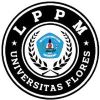Pendampingan dan Pengembangan Pembibitan Kelapa Sawit Tahap Pre Nursery
DOI:
https://doi.org/10.37478/abdika.v3i3.3044Abstract
Oil palm is one of the main plantation commodities in the South Sumatra region. The high price of palm oil makes people try to open or replace their land into oil palm plantations. The failure of the people's oil palm nurseries is a very serious problem during the pandemic. However, in preparing the oil palm seeds, the community is considered a failure because the success rate for the nursery is below 50% or even only 20%. The community's ability to buy oil palm seeds also does not exist because the seeds sold in the market range from Rp. 23,000 to Rp. 45,000 per seed 6 months old. Therefore, assistance and development of early stage oil palm nurseries is carried out. It is hoped that this activity can help the community's difficulties in an effort to participate in the welfare of the local community. The method used is the delivery of material then followed by practice. This practice starts from preparing the planting medium, planting, care, and maintenance. The results obtained show that the failure of the nursery experienced by the community was caused by an inappropriate planting medium, namely the size of a polybag less than 30cm x 30 cm. Then there is no shade so that many seeds experience drought and die. Maintenance of seeds that are not given enough attention, such as watering and fertilizing. These three factors are the main problem of nursery failure. The results of the nursery carried out in this activity reached 98% of the total seeds planted.
Downloads
Keywords:
Pre Nursery, Palm oil, NurseryReferences
Alkahfi, T. S., Rahayu, E., & Hastuti, P. B. (2023). Respon Bibit Kelapa Sawit terhadap Berbagai Macam Pupuk Organik pada Jenis Tanah yang Berbeda di Pembibitan Kelapa Sawit. Agrotechnology, Agribusiness, Forestry, and Technology: Jurnal Mahasiswa Instiper (AGROFORETECH), 1(2), 934-939.
Andri, S., Nelvia, N., & Saputra, S. I. (2017). Pemberian kompos TKKS dan cocopeat pada tanah subsoil ultisol terhadap pertumbuhan bibit kelapa sawit (Elaeis guineensis Jacq.) di pre nursery. Jurnal Agroteknologi, 7(1), 1-6.
Fahlei, R., Rahayu, E., & Kautsar, V. (2017). PENGARUH PEMBERIAN AIR KELAPA DAN LIMBAH CAIR AMPAS TAHU PADA TANAH REGOSOL TERHADAP PERTUMBUHAN BIBIT KELAPA SAWIT DI PRE NURSERY. Jurnal Agromast, 2(1).
Hendarto, E., Qohar, A. F., Hidayat, N., Bahrun, B., & Harwanto, H. (2020, July). Produksi Dan Daya Tampung Rumput Odot (Pennisetum purpureum cv. Mott) Pada Berbagai Kombinasi Pupuk Kandang Dan NPK. In PROSIDING SEMINAR TEKNOLOGI AGRIBISNIS PETERNAKAN (STAP) FAKULTAS PETERNAKAN UNIVERSITAS JENDERAL SOEDIRMAN (Vol. 7, pp. 751-758).
Hidayat, F., Yudhistira, Y., Pane, R. D. P., Sapalina, F., Listia, E., & Winarna, W. (2023). Evaluasi Plant Growth-Promoting Bacteria (PGPB) Indigenus Perakaran Kelapa Sawit Pada Pembibitan Kelapa Sawit. Jurnal Penelitian Kelapa Sawit, 31(1), 43-54.
Pinem, L. J., & Pratiwi, M. (2020). Faktor-Faktor Pendorong Petani dalam Memilih Benih Kelapa Sawit (Elaeis guineensis) Bersertifikat dan Nonsertifikat. Agrimor, 5(1), 1-4.
Pamungkas, S. S. T., & Pamungkas, E. (2019). Pemanfaatan limbah kotoran kambing sebagai tambahan pupuk organik pada pertumbuhan bibit kelapa sawit (Elaeis guineensis Jacq.) di pre-nursery. Mediagro, 15(1).
Putri, K. P., & Djam’an, D. F. (2004). Peran manajemen persemaian dalam upaya penyiapan bibit berkualitas. Info Benih, 9(1), 13-26.
Prasetyo, A. (2018). Analisis Efektivitas Kebijakan Subsidi Pupuk dan Pengaruhnya Terhadap Produksi dan Pendapatan Petani Padi Sawah (Studi Kasus: Desa Melati II, Kecamatan Perbaungan, Kabupaten Serdang Bedagai).
Rosnina, R., Sapareng, S., & Idawati, I. (2019). Optimalisasi Ukuran Dan Jenis Polybag Terhadap Pertumbuhan Bibit Kelapa Sawit Di Pre Nursery. AGROVITAL: Jurnal Ilmu Pertanian, 3(2), 47-50.
Setyorini, T., Hartati, R. M., & Damanik, A. L. (2020). Pertumbuhan bibit kelapa sawit di pre nursery dengan pemberian pupuk organik cair (kulit pisang) dan pupuk NPK. Agritrop: Jurnal Ilmu-Ilmu Pertanian (Journal of Agricultural Science), 18(1), 98-106.
Sinulingga, E. S. R., Ginting, J., & Sabrina, T. (2015). Pengaruh pemberian pupuk hayati cair dan pupuk NPK terhadap pertumbuhan bibit kelapa sawit di pre nursery. Jurnal Agroekoteknologi Universitas Sumatera Utara, 3(3), 105699.
Sinuraya, R. (2019). Pengaruh Daun Kelapa Sawit sebagai Naungan terhadap Pertumbuhan Bibit Kelapa Sawit pada Tahap Pre Nursery. Jurnal Citra Widya Edukasi, 11(2), 191-198.
Sukmawan, Y., & Riniarti, D. (2020). Respons Pertumbuhan Bibit Kelapa Sawit Akibat Pengaturan Bobot Mulsa Tandan Kosong dan Frekuensi Penyiraman. Jurnal Penelitian Kelapa Sawit, 28(3), 159-168.
Tampubolon, R. M. (2019). Pengaruh Frekuensi Penyiraman terhadap Beberapa Jenis Bibit Unggul Kelapa Sawit (Elaeis guinensis Jacq.) yang Bermesokarp Tebal di Main Nursery Umur 4 Sampai 7 Bulan: The Influence of Frequency of Watering to Several Types of Seeds of High Oil Palm (Elaeis quineensis Jacq.) that Have Thick Mesocarp in the Main Nursery 4 until 7 Months. Jurnal Online Agroekoteknologi, 7(2), 356-360.
Titiaryanti, N. M., & Hastuti, P. B. (2023). Penggunaan Macam Pupuk Organik Cair Dan Dosis Pupuk Npk Di Pembibitan Kelapa Sawit Main Nursery. Agrivet, 29(1).
Usodri, K. S., & Utoyo, B. (2021). Pengaruh Penggunaan KNO3 pada Pertumbuhan Bibit Kelapa Sawit (Elaeis guineensis Jack) Fase Pre-Nursery. Jurnal Agrinika: Jurnal Agroteknologi dan Agribisnis, 5(1), 1-9.
Winarni. (2008). Pertumbuhan meranti merah (Shorea ovalis) pada media sapih campuran bokashi jerami-topsoil. Jurnal Hutan Tropis Borneo, 24, 174-179.
Downloads
Published
How to Cite
Issue
Section
License
Copyright (c) 2023 Rosihan Pebrianto, Maulana Yusuf, Eddy Ibrahim

This work is licensed under a Creative Commons Attribution-ShareAlike 4.0 International License.










